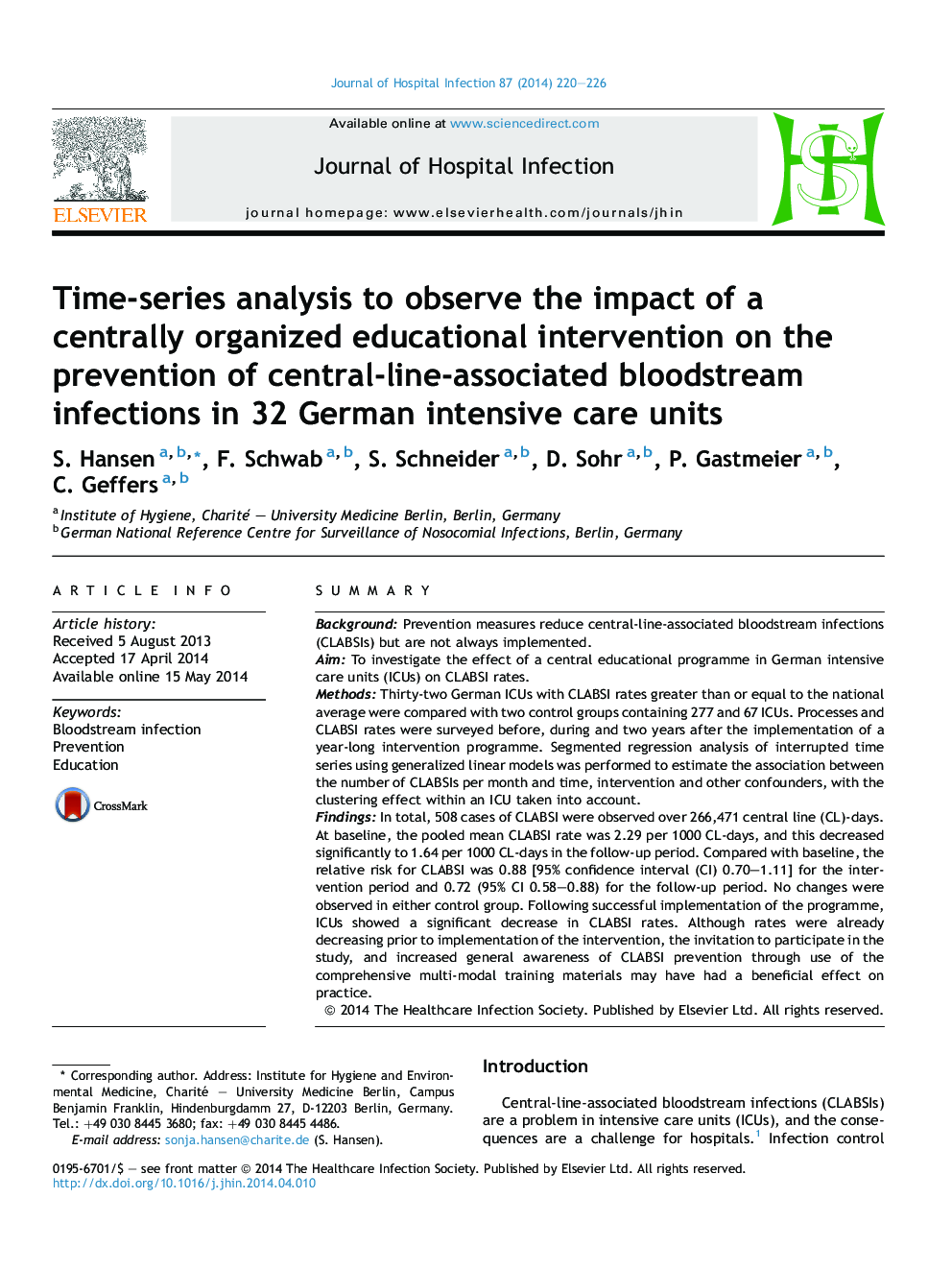| Article ID | Journal | Published Year | Pages | File Type |
|---|---|---|---|---|
| 3371817 | Journal of Hospital Infection | 2014 | 7 Pages |
SummaryBackgroundPrevention measures reduce central-line-associated bloodstream infections (CLABSIs) but are not always implemented.AimTo investigate the effect of a central educational programme in German intensive care units (ICUs) on CLABSI rates.MethodsThirty-two German ICUs with CLABSI rates greater than or equal to the national average were compared with two control groups containing 277 and 67 ICUs. Processes and CLABSI rates were surveyed before, during and two years after the implementation of a year-long intervention programme. Segmented regression analysis of interrupted time series using generalized linear models was performed to estimate the association between the number of CLABSIs per month and time, intervention and other confounders, with the clustering effect within an ICU taken into account.FindingsIn total, 508 cases of CLABSI were observed over 266,471 central line (CL)-days. At baseline, the pooled mean CLABSI rate was 2.29 per 1000 CL-days, and this decreased significantly to 1.64 per 1000 CL-days in the follow-up period. Compared with baseline, the relative risk for CLABSI was 0.88 [95% confidence interval (CI) 0.70–1.11] for the intervention period and 0.72 (95% CI 0.58–0.88) for the follow-up period. No changes were observed in either control group. Following successful implementation of the programme, ICUs showed a significant decrease in CLABSI rates. Although rates were already decreasing prior to implementation of the intervention, the invitation to participate in the study, and increased general awareness of CLABSI prevention through use of the comprehensive multi-modal training materials may have had a beneficial effect on practice.
